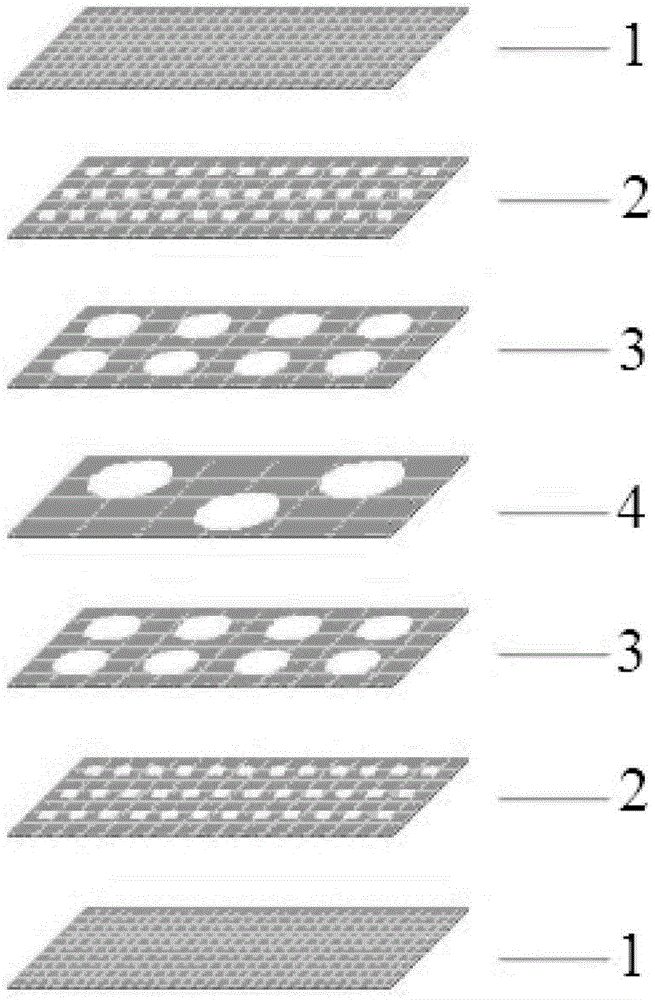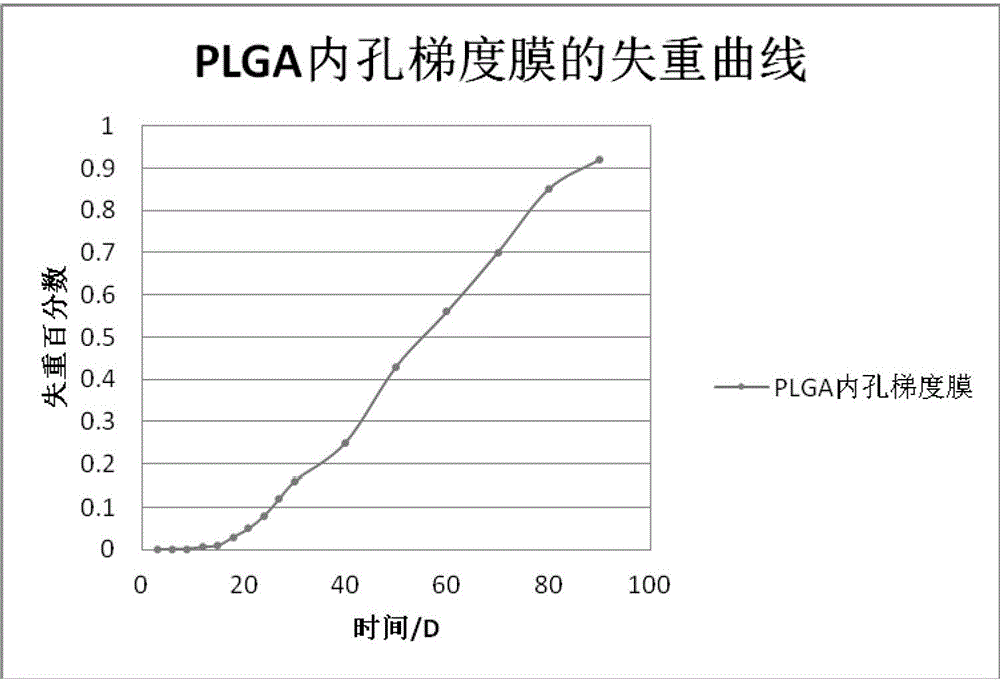Controllable biodegradable plga inner pore gradient membrane and its preparation process
A PLGA and biodegradation technology, applied in the field of biodegradable materials and their preparation, can solve the problems that the degradation behavior of PLGA series and porous membranes has not been investigated, cannot meet the needs of micro auxiliary supports and degrade rapidly, and shorten the soaking time of mechanical strength, etc. Achieve the effect of gentle and stable overall degradation curve without sudden release, controllable degradation speed and stable product quality
- Summary
- Abstract
- Description
- Claims
- Application Information
AI Technical Summary
Problems solved by technology
Method used
Image
Examples
Embodiment 1
[0039] A controllable biodegradable PLGA inner pore gradient membrane, such as figure 1 As shown, the PLGA inner porous gradient membrane has a centrosymmetric structure with a smooth exterior and a porous interior, and is composed of the following seven layers of films with a thickness of 10-50 μm and equal sizes and thicknesses arranged and pressed sequentially: PLGA5050 film 1, porous PLGA6535 film 2. Porous PLGA7525 film 3, porous PLGA8515 film 4, porous PLGA7525 film 3, porous PLGA6535 film 2 and PLGA5050 film 1.
[0040]Among them, the PLGA5050 film is made of PLGA5050 by solvent casting; the porous PLGA6535 film, porous PLGA7525 film and porous PLGA8515 film are respectively made of porous PLGA6535, porous PLGA7525 and porous PLGA8515 by particle leaching. PLGA5050 is formed by the copolymerization of lactic acid and glycolic acid with a weight ratio of 50:50; porous PLGA6535 is formed by the copolymerization of lactic acid and glycolic acid with a weight ratio of 65:35...
PUM
| Property | Measurement | Unit |
|---|---|---|
| thickness | aaaaa | aaaaa |
| pore size | aaaaa | aaaaa |
| particle diameter | aaaaa | aaaaa |
Abstract
Description
Claims
Application Information
 Login to View More
Login to View More - R&D
- Intellectual Property
- Life Sciences
- Materials
- Tech Scout
- Unparalleled Data Quality
- Higher Quality Content
- 60% Fewer Hallucinations
Browse by: Latest US Patents, China's latest patents, Technical Efficacy Thesaurus, Application Domain, Technology Topic, Popular Technical Reports.
© 2025 PatSnap. All rights reserved.Legal|Privacy policy|Modern Slavery Act Transparency Statement|Sitemap|About US| Contact US: help@patsnap.com


